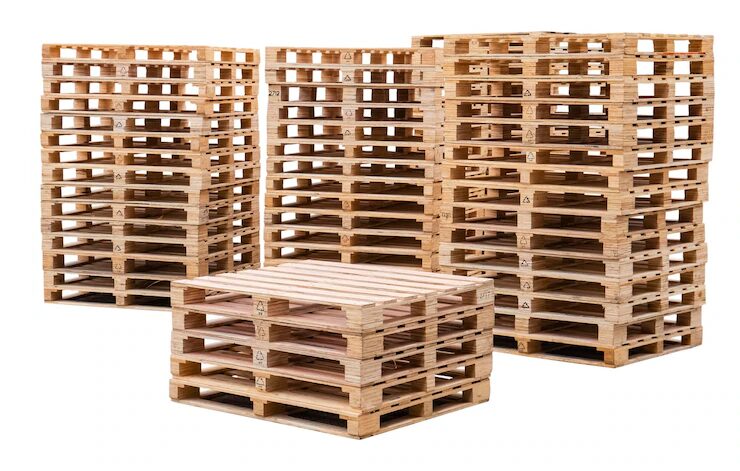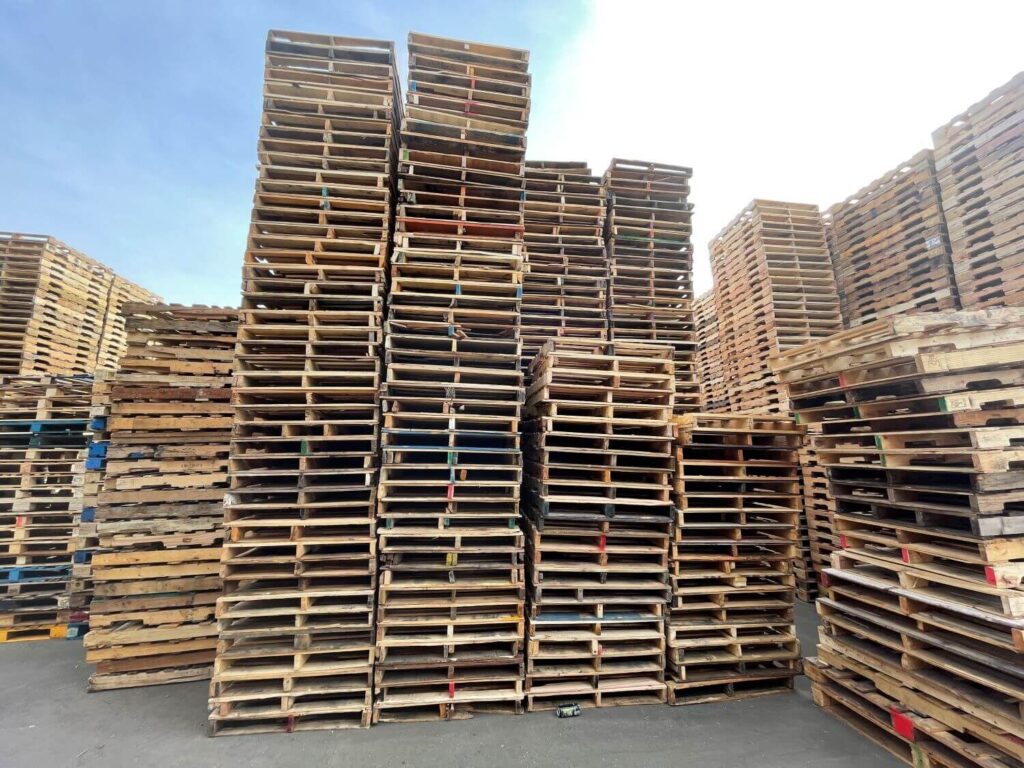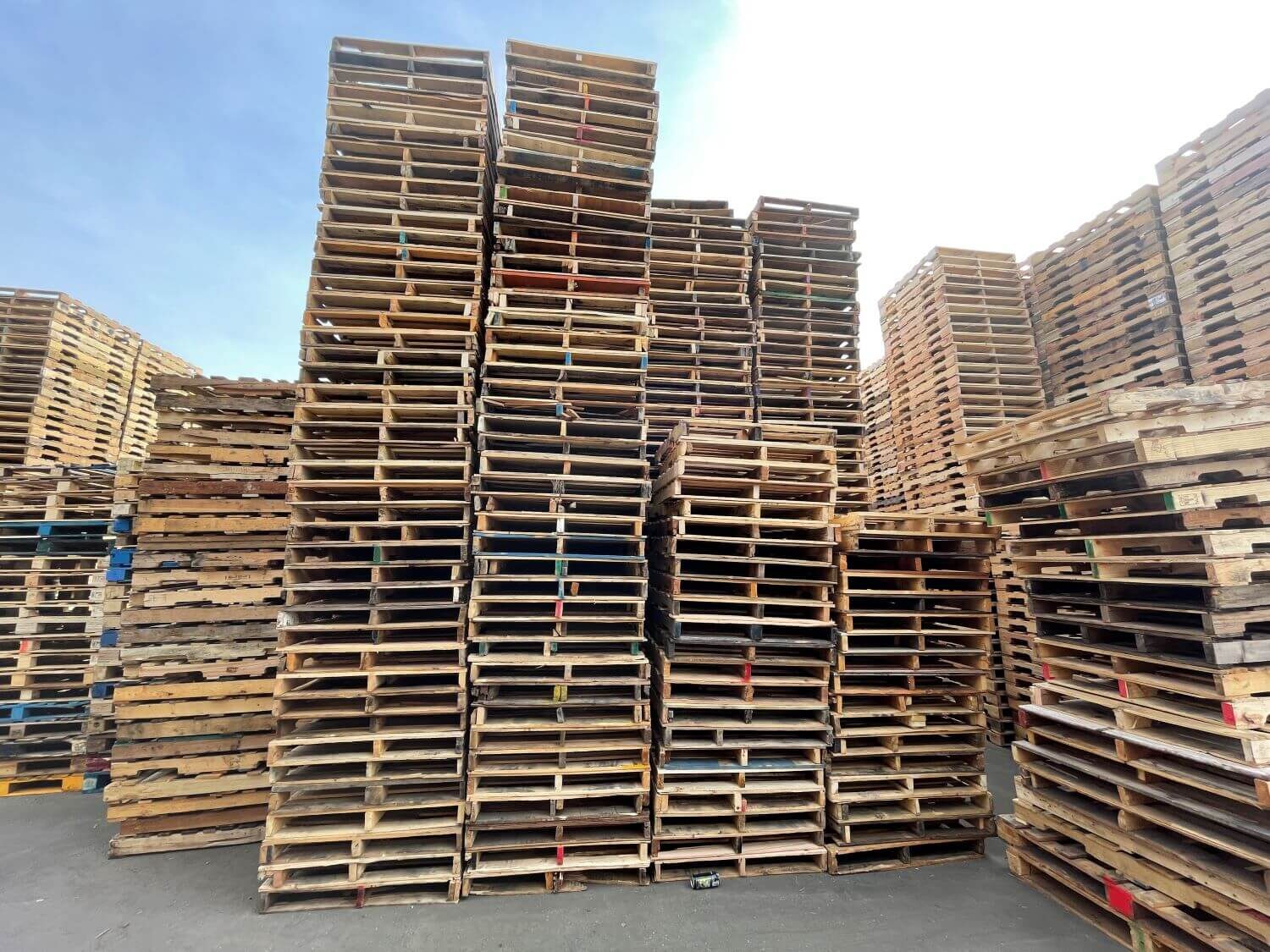Pallet wood is one of the most common and versatile materials for shipping goods around the world. Pallets are flat platforms that can be loaded with various items and moved by forklifts, trucks, or other vehicles. Pallet wood can be made from different types of wood, such as pine, oak, or hardwood, depending on the durability and cost requirements.
However, not all pallets are the same. Different countries and regions have different standards and regulations for the size and shape of pallets. Moreover, different products and industries may have different preferences and needs for the dimensions of pallet wood. Therefore, it is important for shippers and manufacturers to understand the dimensions of pallet wood for shipping, and how to choose the best option for their specific situation.
Standard Pallet Wood Dimensions

The most widely used and recognized standard for pallets is the International Organization for Standardization (ISO). ISO has defined six pallet sizes that are commonly used in international trade:
Table
| ISO Pallet Size | Dimensions (W x L) | Region |
|---|---|---|
| ISO1 | 1000 x 1200 mm | Europe |
| ISO2 | 800 x 1200 mm | Europe |
| ISO3 | 1000 x 1000 mm | Asia |
| ISO4 | 1200 x 1200 mm | Asia |
| ISO5 | 1100 x 1100 mm | Asia |
| ISO6 | 800 x 600 mm | Europe |
These ISO pallet sizes are designed to fit into standard shipping containers, which have a width of 2438 mm and a length of either 6058 mm or 12192 mm. By using these pallet sizes, shippers and manufacturers can optimize the space utilization and reduce the shipping costs.
However, ISO pallet sizes are not the only standard for pallet wood dimensions. There are also other regional and national standards that are widely used in different parts of the world. For example, the North American Pallet Association (NAPA) has defined four pallet sizes that are commonly used in the United States and Canada:
Table
| NAPA Pallet Size | Dimensions (W x L) |
|---|---|
| 48 x 40 inches | 1219 x 1016 mm |
| 42 x 42 inches | 1067 x 1067 mm |
| 48 x 48 inches | 1219 x 1219 mm |
| 40 x 48 inches | 1016 x 1219 mm |
These NAPA pallet sizes are compatible with the standard truck trailers, which have a width of 2438 mm and a length of either 12192 mm or 14630 mm. By using these pallet sizes, shippers and manufacturers can optimize the load capacity and reduce the transportation costs.
Other examples of regional and national standards for pallets include the European Pallet Association (EPAL), which has defined four pallet sizes that are commonly used in Europe, the Australian Standard (AS), which has defined two pallet sizes that are commonly used in Australia, and the Chinese National Standard (GB), which has defined three pallet sizes that are commonly used in China.
Benefits of Using Standard Dimensions for Pallet Wood

Using standard dimensions for pallet wood has many benefits for shippers and manufacturers, such as:
- Compatibility: By using standard dimensions, shippers and manufacturers can ensure that their pallets are compatible with the shipping containers, truck trailers, warehouses, and other facilities that they use or encounter during the shipping process. This can prevent any issues or delays caused by incompatible or mismatched pallets.
- Efficiency: By using standard dimensions, shippers and manufacturers can maximize the space utilization and load capacity of their pallets, and minimize the waste and excess of their materials. This can reduce the shipping costs and environmental impact of their pallets.
- Quality: By using standard dimensions, shippers and manufacturers can ensure that their pallets meet the quality and safety requirements of their customers and regulators. This can prevent any damages or losses caused by defective or substandard pallets.
- Availability: By using standard dimensions, shippers and manufacturers can increase the availability and accessibility of their pallets. This can facilitate the exchange and reuse of their pallets, and reduce the need for new or custom pallets.
Custom Pallet Wood Dimensions
While using standard dimensions for pallet wood has many benefits, it may not always be the best option for shippers and manufacturers. Sometimes, shippers and manufacturers may have specific or unique needs or preferences for the dimensions of their pallet wood, such as:
- Product: Some products may have special or unusual shapes, sizes, weights, or packaging that may not fit well or securely on standard pallets. For example, some products may be too large, too small, too heavy, too light, too fragile, or too irregular for standard pallets.
- Industry: Some industries may have specific or unique standards, regulations, or practices that may require or prefer different pallet wood dimensions than the common ones. For example, some industries may have different quality, safety, hygiene, or environmental requirements or expectations for their pallets.
- Market: Some markets may have different or unique customer demands, preferences, or expectations that may influence the choice of pallet wood dimensions. For example, some markets may have different cultural, aesthetic, or functional preferences for their pallets.
In these cases, shippers and manufacturers may opt for custom pallet wood dimensions, which are pallet wood dimensions that are tailored or customized to their specific or unique needs or preferences. Custom pallet wood dimensions can offer some advantages over standard pallet wood dimensions, such as:
- Flexibility: By using custom pallet wood dimensions, shippers and manufacturers can have more flexibility and control over the design and configuration of their pallets. They can choose the exact dimensions, materials, and features that suit their products, industries, and markets best.
- Differentiation: By using custom pallet wood dimensions, shippers and manufacturers can create a distinctive and competitive edge for their products, industries, and markets. They can differentiate their pallets from the common or generic ones, and create a unique and memorable brand identity and image for their pallets.
- Satisfaction: By using custom pallet wood dimensions, shippers and manufacturers can increase the satisfaction and loyalty of their customers and stakeholders. They can meet or exceed the expectations and requirements of their customers and stakeholders, and deliver a superior and personalized service and experience for their pallets.
Factors to Consider When Choosing Custom Pallets

While using custom pallets can offer some advantages, it can also pose some challenges and risks for shippers and manufacturers, such as:
- Compatibility: By using custom pallet wood dimensions, shippers and manufacturers may face difficulties or limitations in finding compatible or matching shipping containers, truck trailers, warehouses, and other facilities for their pallets. They may also encounter issues or conflicts with the standards or regulations of different countries or regions for their pallets.
- Efficiency: By using custom pallet wood dimensions, shippers and manufacturers may compromise the space utilization and load capacity of their pallets, and increase the waste and excess of their materials. They may also incur higher shipping costs and environmental impact for their pallets.
- Quality: By using custom pallet wood dimensions, shippers and manufacturers may compromise the quality and safety of their pallets, and increase the risk of damages or losses for their pallets. They may also face difficulties or challenges in ensuring the quality and consistency of their pallets, especially if they source or produce their pallets from different suppliers or locations.
- Availability: By using custom pallet wood dimensions, shippers and manufacturers may reduce the availability and accessibility of their pallets. They may also face difficulties or challenges in finding, exchanging, or reusing their pallets, and increase the need for new or custom pallets.
Therefore, choosing custom pallets is not a simple or straightforward decision. Shippers and manufacturers need to consider various factors and trade-offs when deciding whether to use custom pallet wood dimensions or not. Some of the factors that they need to consider include:
- Product characteristics: Shippers and manufacturers need to consider the characteristics of their products, such as the shape, size, weight, packaging, and value of their products, and how they affect the choice of pallet wood dimensions. They need to choose the pallet wood dimensions that can accommodate, protect, and secure their products best, and avoid any damages or losses during the shipping process.
- Industry standards and regulations: Shippers and manufacturers need to consider the standards and regulations of their industries, such as the quality, safety, hygiene, and environmental standards and regulations that apply to their pallets, and how they affect the choice of pallet wood dimensions. They need to choose the pallet wood dimensions that can comply with and satisfy the standards and regulations of their industries, and
- avoid any penalties or fines for their pallets Market demands and preferences: Shippers and manufacturers need to consider the demands and preferences of their markets, such as the cultural, aesthetic, and functional demands and preferences of their customers and stakeholders, and how they affect the choice of pallet wood dimensions. They need to choose the pallet wood dimensions that can appeal to and satisfy the demands and preferences of their markets, and create a positive and lasting impression for their pallets.
- Cost and benefit analysis: Shippers and manufacturers need to consider the cost and benefit analysis of using custom pallet wood dimensions, such as the initial and ongoing costs of sourcing, producing, and maintaining custom pallets, and the potential benefits of increasing customer satisfaction, loyalty, and retention, and enhancing brand identity and image, and how they affect the choice of pallet wood dimensions. They need to choose the pallet wood dimensions that can provide the best return on investment for their pallets, and balance the trade-offs between cost and benefit.
Common Mistakes to Avoid When Selecting Pallet Dimensions

Selecting the right pallets for shipping is not an easy task. Shippers and manufacturers need to avoid some common mistakes that can lead to poor or suboptimal outcomes for their pallets, such as:
- Using the wrong standard: Shippers and manufacturers need to be aware of the different standards and regulations for pallet wood dimensions that exist in different countries and regions, and use the appropriate standard for their destination and origin. Using the wrong standard can result in incompatible or mismatched pallets, and cause delays, damages, or losses during the shipping process.
- Using the wrong size: Shippers and manufacturers need to be careful of the size of their pallets, and ensure that they fit well and securely with their products, shipping containers, truck trailers, warehouses, and other facilities. Using the wrong size can result in wasted or excess space, materials, and costs, and compromise the quality and safety of their pallets and products.
- Using the wrong material: Shippers and manufacturers need to be mindful of the material of their pallets, and ensure that they are durable, sturdy, and suitable for their products, industries, and markets. Using the wrong material can result in weak or defective pallets, and increase the risk of damages or losses for their pallets and products.
- Using the wrong feature: Shippers and manufacturers need to be attentive to the features of their pallets, such as the number and placement of boards, nails, blocks, and other components, and ensure that they are functional, efficient, and convenient for their pallets and products. Using the wrong feature can result in inefficient or inconvenient pallets, and reduce the performance and usability of their pallets and products.
Tips for Maximizing Shipping Efficiency

Selecting the right pallet for shipping is not only a matter of avoiding mistakes, but also a matter of maximizing efficiency. Shippers and manufacturers can use some tips and best practices to optimize their shipping efficiency with pallet wood dimensions, such as:
- Use standard dimensions when possible: Shippers and manufacturers should use standard dimensions for pallet wood when possible, as they can offer compatibility, efficiency, quality, and availability benefits for their pallets and products. They should also use the most common or widely used standard for their destination and origin, as they can increase the availability and accessibility of their pallets and products.
- Use custom dimensions when necessary: Shippers and manufacturers should use custom dimensions for pallet wood when necessary, as they can offer flexibility, differentiation, and satisfaction benefits for their pallets and products. They should also use the most optimal or suitable custom dimensions for their products, industries, and markets, as they can enhance the performance and appeal of their pallets and products.
- Use the right tools and resources: Shippers and manufacturers should use the right tools and resources to measure, design, and produce their pallet wood dimensions accurately and consistently. They should use tools and resources that are reliable, accurate, and easy to use, such as measuring tapes, rulers, calculators, software, and online platforms, as they can improve the quality and consistency of their pallets and products.
Examples of Successful Pallet Wood Dimension Strategies

To illustrate how shippers and manufacturers can use pallet wood dimensions to achieve their shipping goals, here are some examples of successful pallet wood dimension strategies that have been used by different companies and industries:
- Amazon: Amazon is one of the world’s largest and most successful online retailers, and it uses pallet wood dimensions to optimize its shipping efficiency and customer satisfaction. Amazon uses standard pallet wood dimensions that are compatible with its shipping containers and warehouses, and it also uses custom pallet wood dimensions that are tailored to its products and customers. For example, Amazon uses a custom pallet size of 48 x 24 inches for its small and light products, such as books, DVDs, and electronics, as it can reduce the shipping costs and increase the customer convenience.
- IKEA: IKEA is one of the world’s largest and most popular furniture retailers, and it uses pallets to optimize its product design and customer experience. IKEA uses standard pallet wood dimensions that are compatible with its shipping containers and stores, and it also uses custom pallet wood dimensions that are integrated with its products and customers. For example, IKEA uses a custom pallet size of 800 x 600 mm for its flat-packed furniture, such as tables, chairs, and shelves, as it can reduce the material waste and increase the customer satisfaction.
- Coca-Cola: Coca-Cola is one of the world’s largest and most iconic beverage brands, and it uses pallet wood dimensions to optimize its brand identity and image. Coca-Cola uses standard pallet wood dimensions that are compatible with its shipping containers and trucks, and it also uses custom pallets that are distinctive and memorable for its products and customers. For example, Coca-Cola uses a custom pallet size of 1200 x 800 mm for its bottles and cans.





